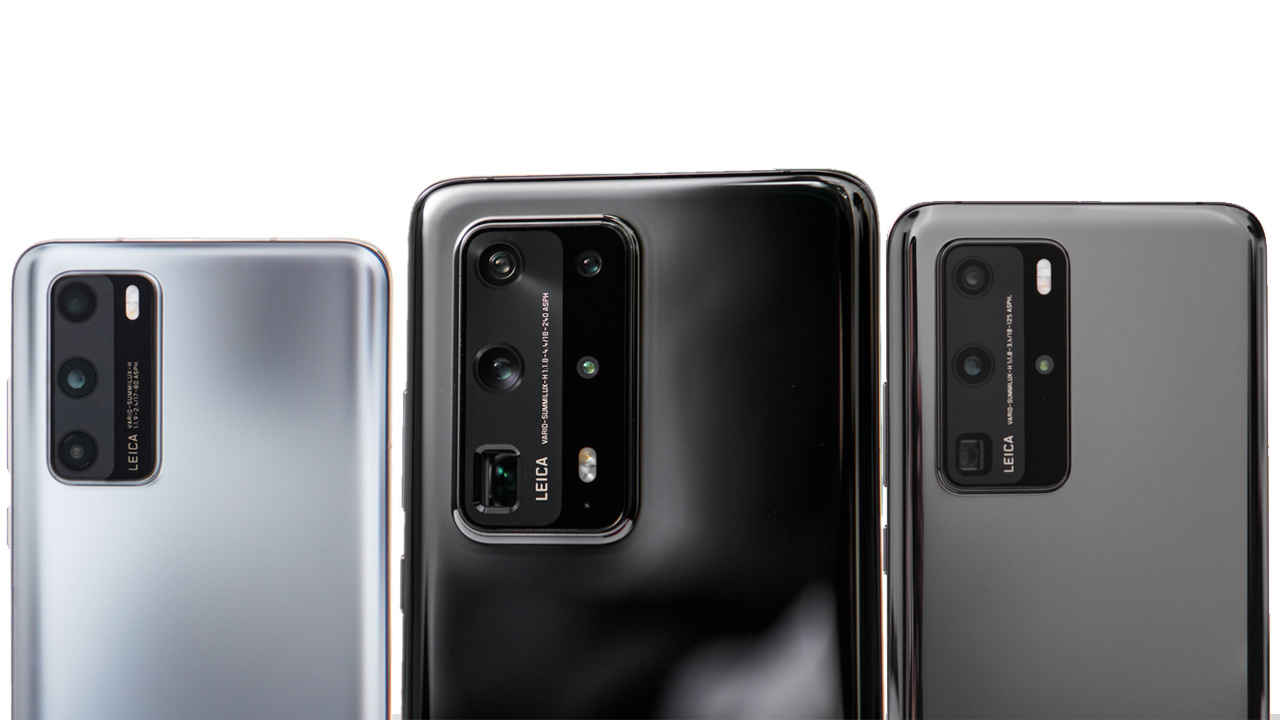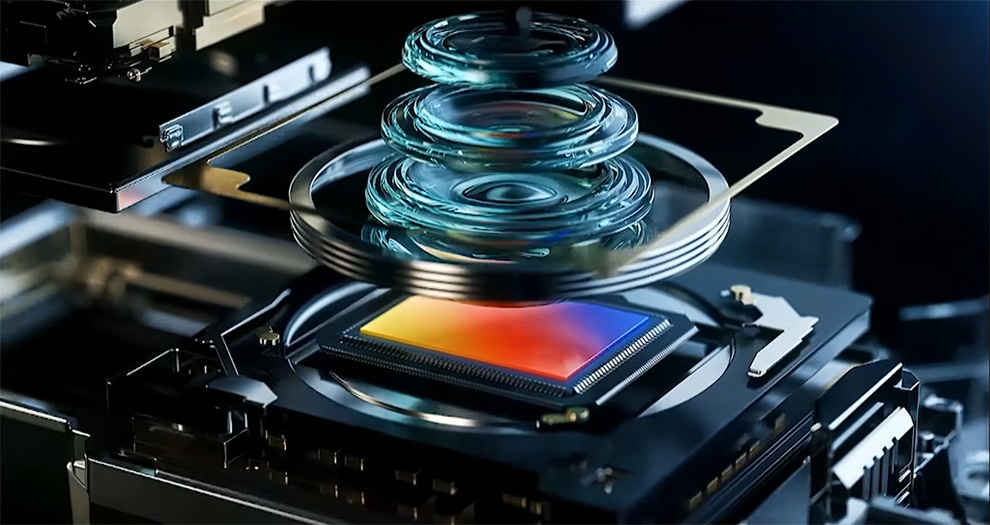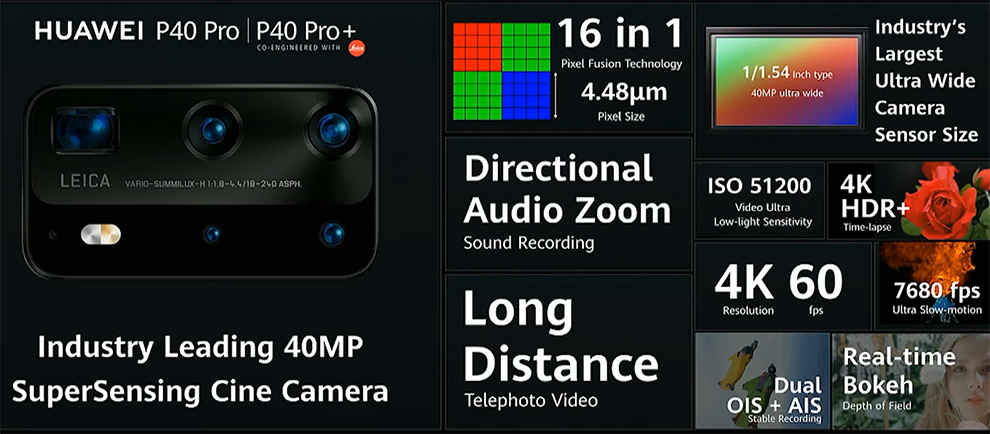Huawei P40 Pro camera: A closer look at how the innovative module works
Full control over hardware-software allowed Huawei to avoid colour interference problems.
Using RYYB sensor for telephoto lens enough to compensate for small aperture.
Huawei P40 Pro's primary camera has the largest imaging sensor in a smartphone yet.

Smartphones have become the single most important gadget in our lives, assimilating many other electronics into one. They now function as our source of entertainment, our gateway to knowledge and so much more. One of the most defining features of smartphones these days is the camera, with users often choosing one smartphone over the other simply due to the camera configuration and/or the performance. Huawei has been one smartphone company that has always pushed camera technology in smartphones, so we sat down with Peter Gauden, Global Senior Product Marketing Manager, Huawei Consumer Business Group, to talk about the upcoming Huawei P40 series and all the innovation packed into its cameras.
 Survey
SurveyHuawei P40 Pro: Upgraded Sensors
The Huawei P40 series houses imaging sensors that by themselves are enough to make you take notice. First off, the camera setup uses larger-than-before image sensors. The primary sensor has gone from 1/1.7 inch on the P30 Pro to 1/1.28 inch on the P40 series. The ultra-wide camera houses a 1/1.53-inch sensor, far bigger than the one on the iPhone 11 Pro (1/3.4”) or the one on the Huawei P30 Pro (1/2.7). Besides increasing the size of these two sensors, Huawei has also increased the resolution on both sensors. The telephoto sensor, however, retains its original 8-megapixel resolution, but instead of being a regular RGB sensor, Huawei has swapped it out for an RYYB sensor. When asked why Huawei didn’t opt for the RYYB design on the ultra-wide sensor, Peter told us that “With each of our cameras, we look at the aim of the sensor. We look at each individual ingredient and try to figure out what is the best mix of those ingredients to give us the best quality image. What we do with the 1/1.154 sensor. The key information is light linked to the quality of the image. With the cine camera system, we use the pixel binning, down to 16 pixels joining to one. So that's for both photo and video but mainly for the video. That's why we've improved quite dramatically the low light video capability. So although it's in there as an ultra-wide HD, the main aspect of the camera is as the video camera.”
Huawei P40 Pro: The Wild 16-in-1 Pixel Binning
The ultra-wide camera on the P40 Pro and P40 Pro+ features a 40-megapixel sensor, which when used in video mode, bins 16 pixels into 1, creating a massive 4.48-micron pixel pitch. While pixel binning has really helped smartphone cameras become better, there is a problem that comes with it in the form of colour interference. Colour interference happens when you pack too many pixels of the same colour next to each other, the ISP can have severe problems reconstructing the real-world colour information from the sensor data. Peter informs us that because Huawei has full development control over the sensor, the ISP and the demosaicing algorithms (the process of converting sensor data into a full-colour image), they’re able to circumvent this problem with ease. Gauden explains the process, saying that the ISP on the Kirin 990 has been redesigned keeping in mind the Bayer-pattern on the ultra-wide-angle sensor, that it will have to resolve a 16-to-1 pixel binned image, and also the RYYB Bayer pattern for the other camera sensors. Having full control over the software and hardware is what, Gauden says, has allowed Huawei to circumvent the colour interference issue.
Huawei P40 Pro: Longer Telephoto, smaller aperture
The Huawei P40 Pro’s telephoto lens has an aperture of f/3.4, while the P40 Pro+, with its 10x optical zoom lens, has an aperture of f/4.4. While most other manufacturers are trying to make the aperture on their telephoto lenses bigger, Huawei’s have only gotten smaller. This means that the telephoto sensor is getting lesser light, making its usability severely restricted. “We're still maximizing the light that's coming in. This is the advantage of switching to absorbing yellow light” elaborates Peter. Here, he is referring to the company’s use of the RYYB sensor instead of RGB. By switching to a yellow pixel on the sensor instead of green, Huawei claims the sensor is able to absorb 40 per cent more light. While Peter’s explanation makes sense, only once we’ve tested the P40 series camera will we be able to conclude whether the RYYB sensor is enough to compensate for the absence of a large aperture.
Early reviews of the Huawei P40 Pro’s camera have been pointing towards a very promising camera stack. However, Huawei’s challenge, for now, is the lack of Google Mobile Services being available on their latest flagship device. Even if the cameras on the P40 Pro and the P40 Pro+ manage to live up to every bit of the marketing hype, they still have to get over the hurdle of not having access to the Play Store or any of the other Google services. As of now, Huawei has not made any announcements about the availability of the P40 series in India.
Swapnil Mathur
Swapnil was Digit's resident camera nerd, (un)official product photographer and the Reviews Editor. Swapnil has moved-on to newer challenges. For any communication related to his stories, please mail us using the email id given here. View Full Profile

